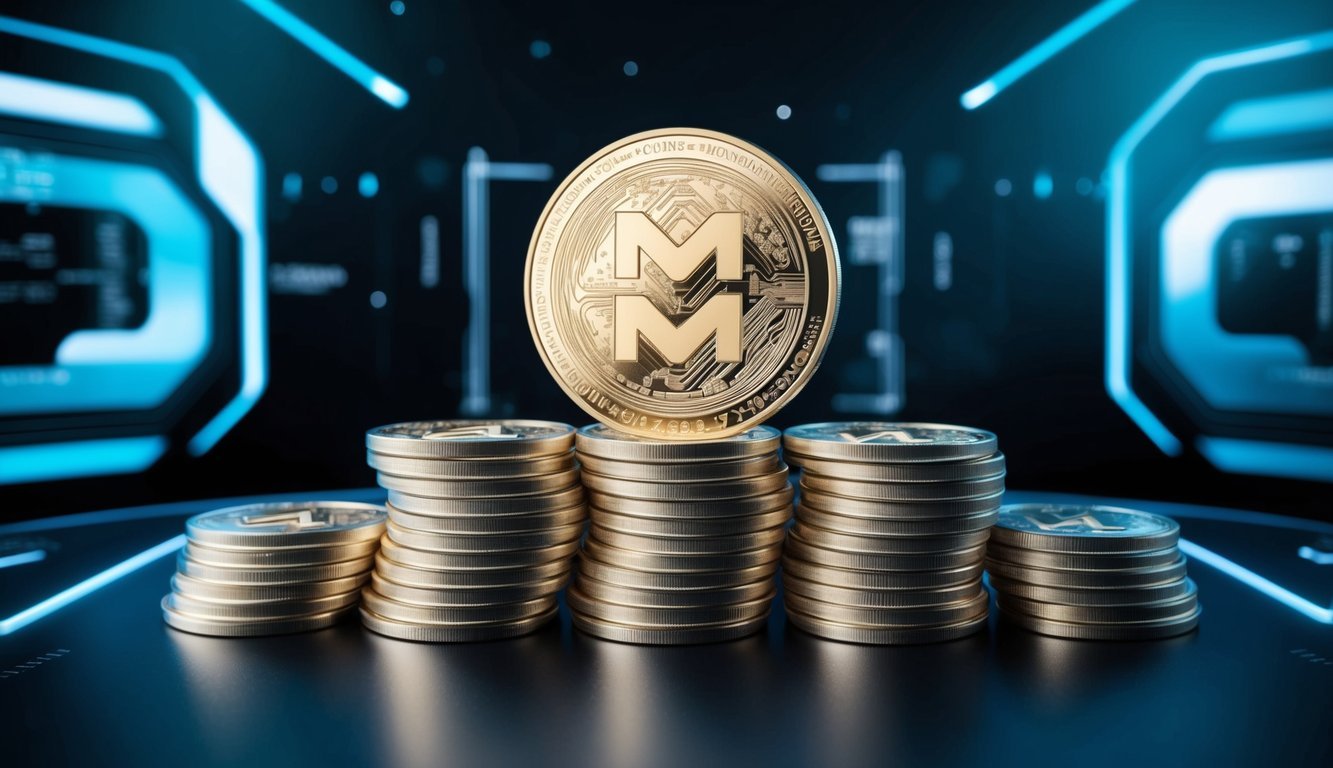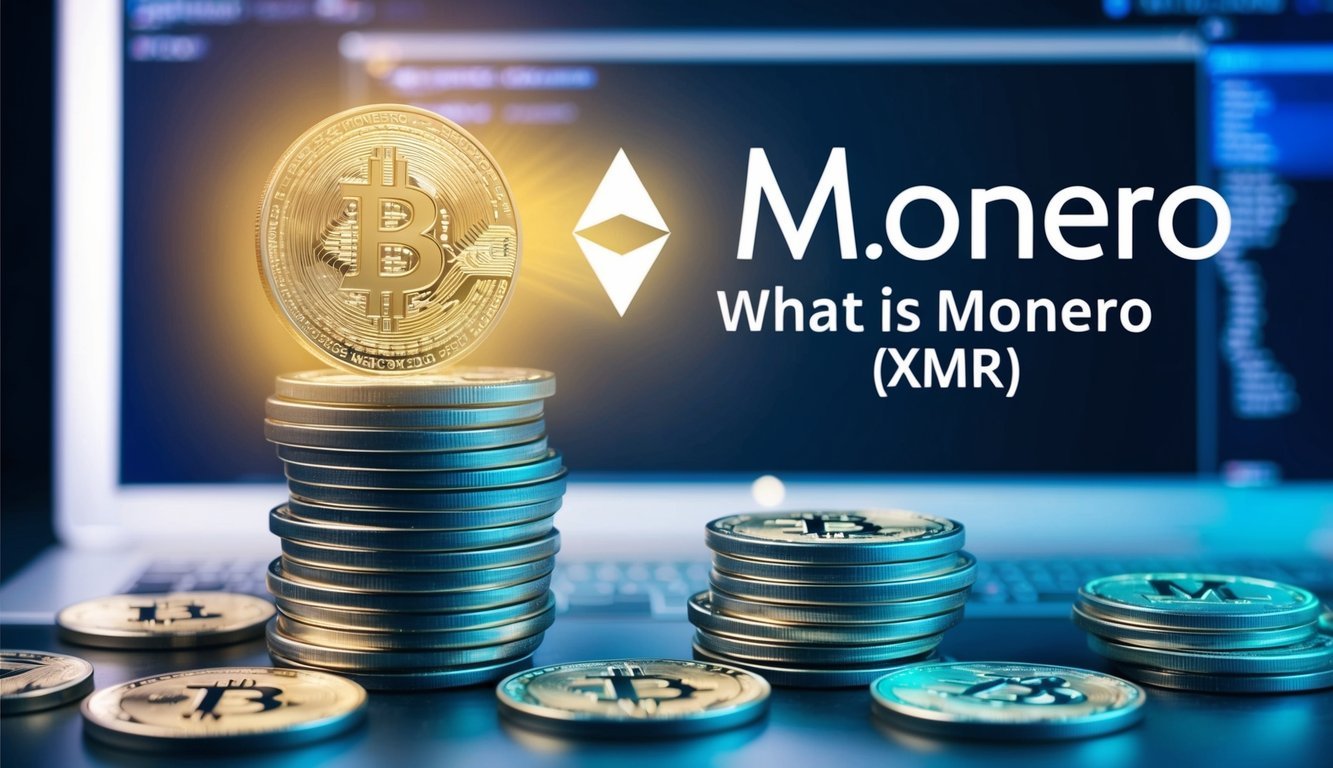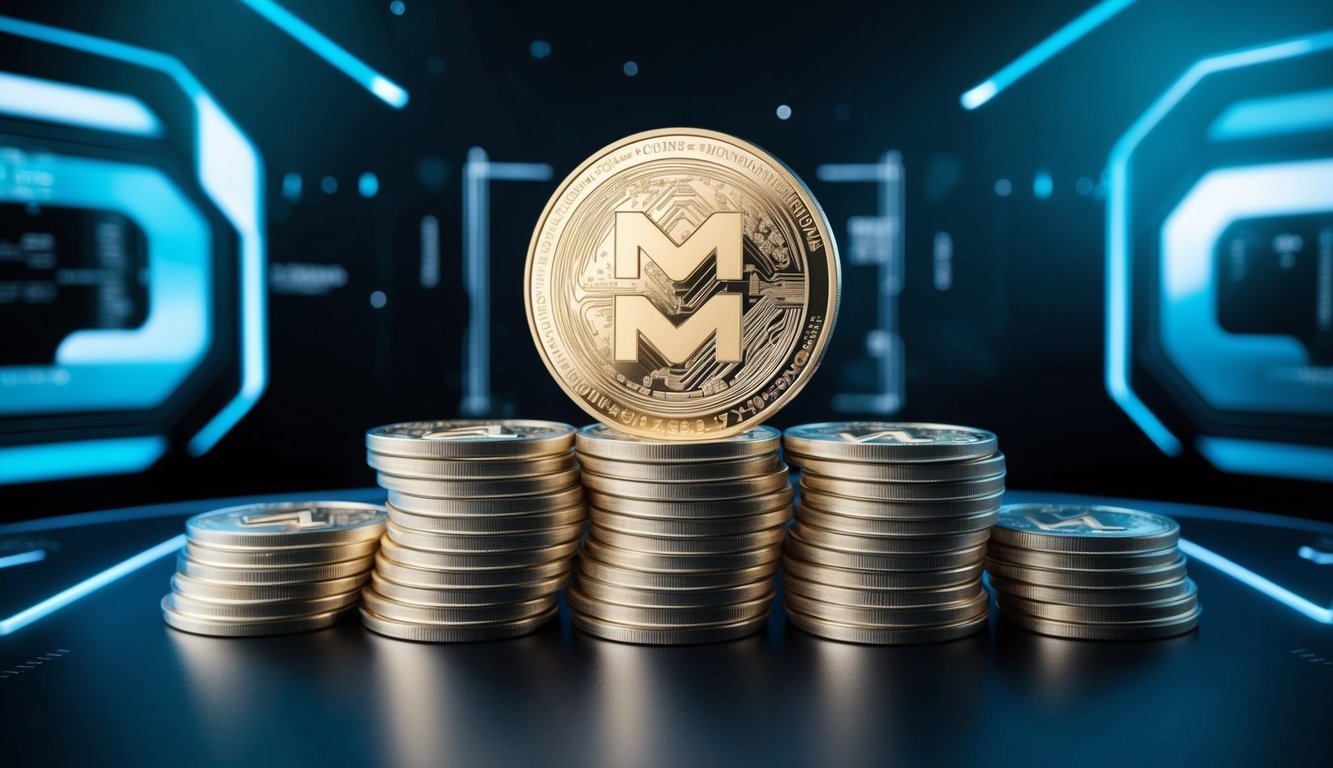Monero is a unique type of digital money that puts your privacy first. Unlike other cryptocurrencies, it keeps your financial details hidden from prying eyes. Monero uses special technology to hide who sends and receives payments, as well as how much money is involved.

You might wonder why privacy matters in the world of digital cash. Well, imagine if everyone could see how much money you have and what you spend it on. That’s what happens with many other cryptocurrencies. But Monero is different. It keeps your financial life private, just like cash does in the real world.
Monero isn’t just about hiding your info. It’s also about making fast, cheap payments anywhere in the world. You don’t have to worry about extra fees or long wait times. Plus, you can use Monero without fear of your money being traced back to you.
Key Takeaways
- Monero is a cryptocurrency that keeps your transactions private and untraceable.
- You can use Monero to send money quickly and cheaply anywhere in the world.
- Monero’s technology hides sender, receiver, and payment amount information.
Understanding Monero’s Core Principles

Monero stands out as a cryptocurrency focused on privacy and security. It uses special tech to keep your transactions hidden and untraceable.
Decentralization and Its Importance
Monero runs on a decentralized network. This means no single person or group controls it. You don’t need to trust anyone to use it.
Decentralization makes Monero resistant to censorship. No one can freeze your funds or stop you from sending money.
It also keeps the system fair. Everyone follows the same rules. Big players can’t change how Monero works to benefit themselves.
Privacy and Security Features
Monero uses clever tricks to hide your financial info. It’s like having an invisible bank account.
Ring signatures mix your transaction with others. This makes it hard to tell which one is yours.
Stealth addresses create new addresses for each transaction. Your real address stays hidden.
Ring Confidential Transactions (RingCT) hide the amount you send. Nobody can see how much money is moving around.
These features work together to keep your finances private. Even if someone tries really hard, they can’t spy on your Monero use. Additionally, the incorporation of advanced cryptographic techniques ensures that transaction details remain obscured from prying eyes. For those looking to enhance security further, multisignature wallets explained offer an added layer of protection by requiring multiple keys to authorize a transaction. This means that even in the unlikely event of a security breach, unauthorized access remains a formidable challenge.
Anonymity and Fungibility
Monero makes all coins look the same. This is called fungibility. It means each coin is worth the same as any other.
Your coins don’t have a history that can be traced. This protects you from discrimination based on where your money came from.
Anonymity means you can use Monero without revealing who you are. Your identity stays secret when you send or receive funds.
This makes Monero different from Bitcoin. With Monero, you don’t have to worry about your transaction history being public.
How Monero Works
Monero uses clever tech to keep your money moves secret. It hides who sends and gets coins, and how much. Let’s look at how it all works.
Monero Transactions Explained
When you send Monero, your transaction gets mixed with others. This is called a ring signature. It’s like putting your hand in a circle with other people. No one can tell which hand is yours.
Ring signatures make it hard to track who sent what. The blockchain shows that coins moved, but not who moved them. This keeps your spending private.
Monero also hides how much you send. It splits your payment into random amounts. These pieces get mixed with fake coins called “decoys”. This makes it tough for others to guess the real amount.
Unpacking RingCT and Stealth Addresses
RingCT stands for “Ring Confidential Transactions”. It’s a fancy way to hide how much Monero you’re sending. When you make a payment, RingCT scrambles the amount. Only the sender and receiver can see the true value.
Stealth addresses are like secret mailboxes for your Monero. When you send XMR to someone, it creates a one-time address. This address isn’t linked to the receiver’s main address. It’s like getting a package delivered to a P.O. box instead of your home.
These tools work together to keep your Monero use private. They make it nearly impossible for others to see your balance or track your spending habits.
Mining Monero: How and Why
Mining Monero is how new coins are made and transactions are checked. Unlike Bitcoin, you don’t need special machines to mine XMR. You can use your computer’s CPU or GPU.
Monero uses a mining algorithm called RandomX. It’s designed to be “ASIC-resistant”. This means big mining farms don’t have an unfair advantage. It keeps mining more open to regular folks like you.
When you mine, you’re helping to process transactions and secure the network. In return, you get a chance to earn some XMR. Mining also helps keep Monero decentralized. The more miners there are, the harder it is for any one group to control the network.
Monero Adoption and Ecosystem
Monero has grown beyond just a cryptocurrency. It’s now part of a wider ecosystem with places to use it and people working to improve it.
Where to Use Monero
You can use Monero in more places than you might think. Many online stores now accept XMR for payments. These include tech shops, VPN services, and even some travel sites.
Some crypto exchanges let you trade Monero too. But remember, not all of them do because of its privacy features.
For storing your XMR, you’ve got options. There are desktop wallets, mobile apps, and hardware wallets that work with Monero. Pick one that fits how you use your coins.
Monero Community and Development
Monero has a strong community backing it up. You’ll find active forums and chat groups where users help each other out.
The Monero Project is open-source, so anyone can pitch in. Developers from around the world work on improving Monero’s code.
There’s even a Monero Research Lab. These folks study ways to make Monero more private and efficient.
If you’re into privacy, you might like Monero’s community. Many privacy advocates support and use XMR because of its focus on keeping transactions secret.
Challenges and the Future of Monero
Monero faces some big hurdles but also has exciting plans ahead. You’ll see how it’s dealing with legal issues and working on cool new tech.
Regulatory Challenges and Risks
Monero’s privacy features make it a target for regulators. Many worry it could be used for money laundering or other illegal activities. Some countries have even banned Monero trading.
You might find it harder to buy or sell XMR on exchanges. Some have dropped it due to pressure from governments. This could make it tougher for you to use Monero in the future.
Darknet markets often use Monero, which adds to its bad rep. This link to shady deals could lead to more crackdowns. You’ll need to stay alert to changing rules about privacy coins.
Future Prospects and Ongoing Research
Despite the challenges, Monero keeps pushing forward. The Monero Research Lab is always working on cool new stuff. They’re trying to make transactions faster and more private.
You might see better scaling soon. This means Monero could handle more transactions without slowing down. The team is also looking at ways to make mining fairer for everyone.
New tech like Bulletproofs+ could make Monero even more private. They’re also working on making it harder for special mining chips (ASICs) to take over. This helps keep Monero decentralized, which is good for you as a user.
Monero aims to stay one step ahead of those trying to crack its privacy. With ongoing research, you can expect it to keep evolving and improving in the years to come.
Frequently Asked Questions

Monero users often have questions about using, buying, and storing XMR. Let’s look at some common queries about this privacy-focused cryptocurrency.
How do you use Monero for transactions?
To use Monero, you need a wallet with XMR coins. When sending money, enter the recipient’s address and amount. Your wallet creates a one-time address for the transaction.
The process is private. No one can link the sender, receiver, or amount to you.
What’s the current price of Monero?
Monero’s price changes often. Check a cryptocurrency exchange for the latest XMR value.
Remember, crypto prices can be very unstable. Always do your research before buying.
Can you give me the lowdown on mining Monero?
Monero mining uses your computer to solve math problems. This helps verify transactions on the network.
You can mine XMR with a regular computer CPU. This makes it different from Bitcoin, which needs special hardware.
Mining pools let you team up with others to find blocks faster. You share the rewards based on how much work you do.
What wallets are recommended for storing Monero?
The official Monero wallet is a good choice. It’s free and works on computers and phones.
Hardware wallets like Ledger and Trezor also support XMR. These are very secure but cost money.
Mobile wallets like Monerujo for Android and Cake Wallet for iOS are handy for on-the-go use.
How can you purchase Monero?
You can buy XMR on many crypto exchanges. Some popular ones are Binance, Kraken, and Huobi.
First, set up an account and verify your identity. Then, deposit money and place an order to buy XMR.
Some exchanges might not sell XMR in certain areas due to rules. Check what’s available where you live.
Is there any difference between Monero and XMR?
Monero and XMR are the same thing. Monero is the full name of the cryptocurrency.
XMR is just a short way to write it. It’s like how BTC is short for Bitcoin.
When you see either Monero or XMR, they’re talking about the same privacy-focused digital money.




